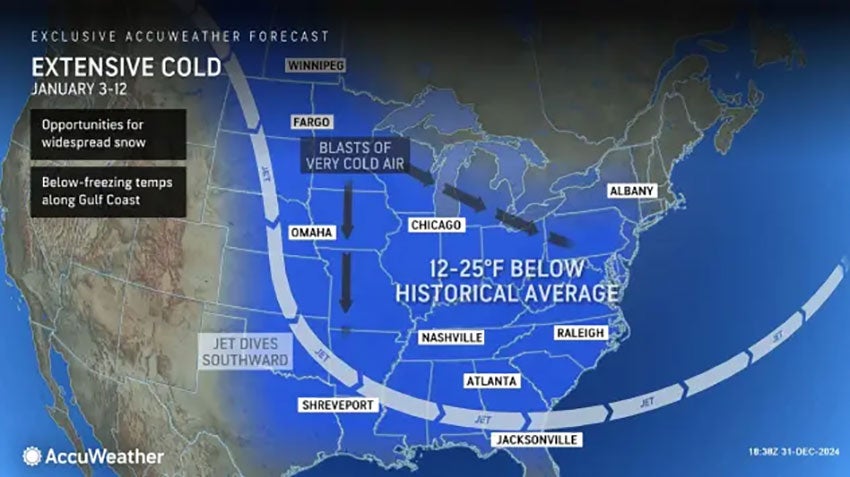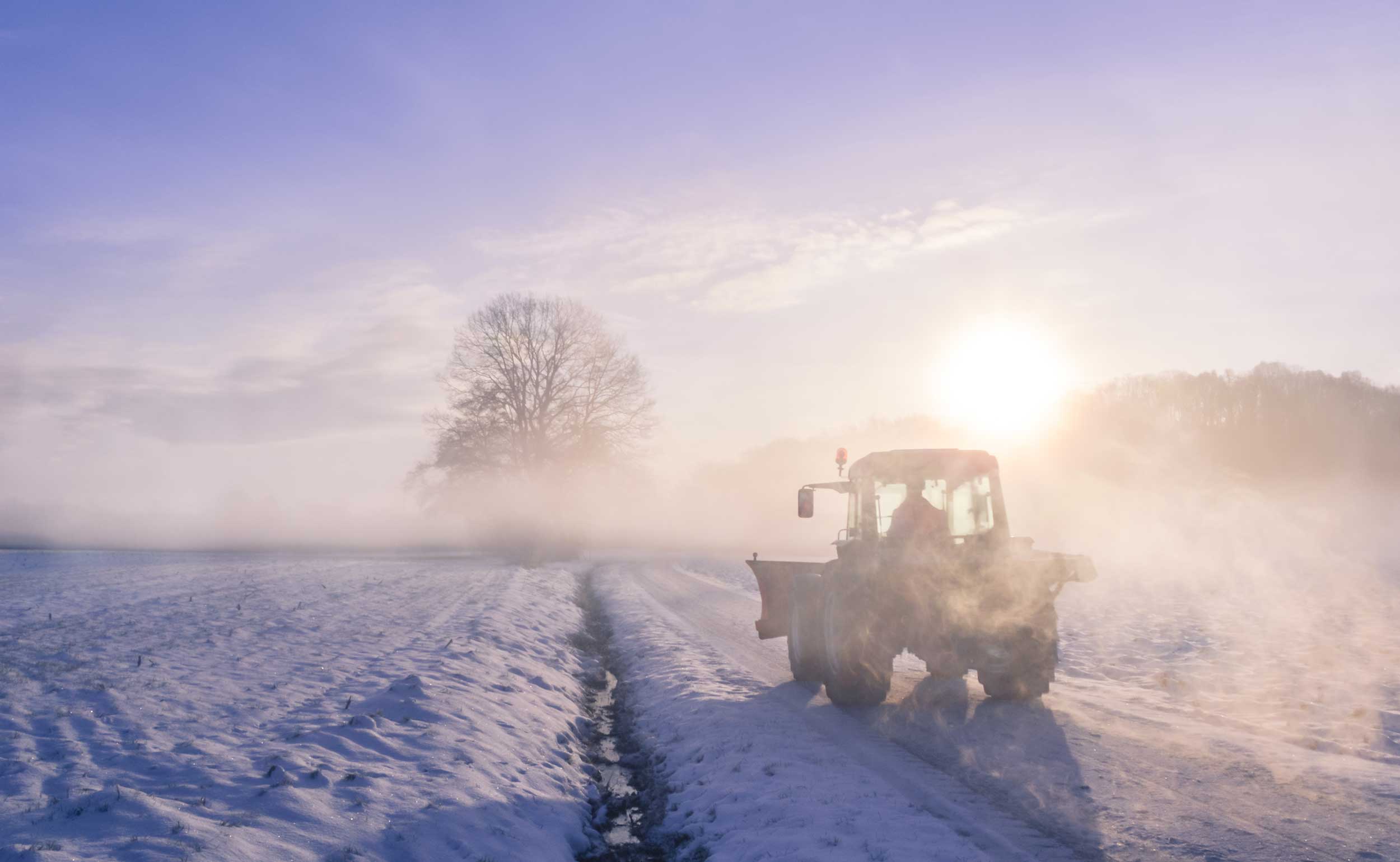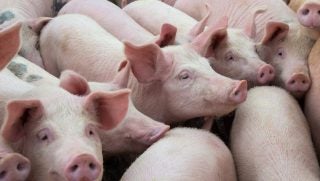Farms across the central and eastern parts of the U.S. should be bracing for a coming Arctic blast, which is expected to plunge temperatures 12 to 25 degrees below historical norms. This pattern is poised to make January 2025 the coldest January since 2011 and will bring opportunities for widespread snow and ice and freezing temperatures even into the gulf coast area.
AccuWeather meteorologists described that “the severity of the cold air could be dangerous, damaging, and disruptive and is expected to create a big surge in demand for heating, leading to higher energy bills.”
Winter yes. A wonderland? Not so much.

The bulk of the cold is anticipated to hit before the middle of the month and is being caused by a methodic dip in the jet stream.
During this stretch, livestock producers will have to work harder to ensure that animals have access to water, monitor for pathogenic diseases like blackleg, and help their animals manage cold stress, which occurs when cattle require more energy to sustain basic bodily functions at a specific temperature, called the lower critical temperature.
“The first large and long-tracking Arctic high pressure area will sink southward across the Plains and impacts Texas early next week,” AccuWeather Lead Long-Range Expert Paul Pastelok said. “This air mass will continue to follow the storm along the Gulf coast, Tennessee Valley, and Southeast between Jan. 8 and 9.”
Yet later in January, even after the iciest of the weather breaks, temperatures will likely remain lower than normal.
Erin Larimore with University of Missouri Extension recommended that in extreme cold such as this, producers should pay extra attention to:
- Nutrient needs to increase in cold weather because animals are trying to maintain body temperature; have plenty of feed resources
- If calving during this weather, consider unrolling hay or straw to provide some warmth for newborns or move cows close to calving to shelter
- Check water tanks for freezing
- Block airflow in trailers if hauling livestock
“Water is the most essential nutrient for cattle production,” said Jon DeClerck, Ph.D., cattle nutritionist with Purina Animal Nutrition. “It’s used for regulating body temperature, growth, reproduction, lactation, digestion and many other bodily functions. Water also drives intake for mineral, forage and supplements. And while we typically worry more about water intake in summer, it’s equally as important in cold weather.”

Even though people primarily consider prepping livestock, you can’t neglect the necessary machinery needed for daily use either. Andrew Hulshof at A+J Farms also recommended keeping equipment in top shape for reliability during the extreme cold.
- Put equipment you know you will be using inside somewhere or plug up the block heaters
- Add extra fuel stabilizer to any machinery you will need in the cold
- Check antifreeze in all the motors
- Winterize sprayers
- Make sure garden hoses are unhooked
AccuWeather’s description of the upcoming weather pattern is that it will likely to be strewn with various storms of different magnitudes and tracks. Depending on exactly where these storms travel, a band of heavy snow and wintry mix (instead of just rain) is likely to occur just to the north and west of the center of low pressure for each system.


